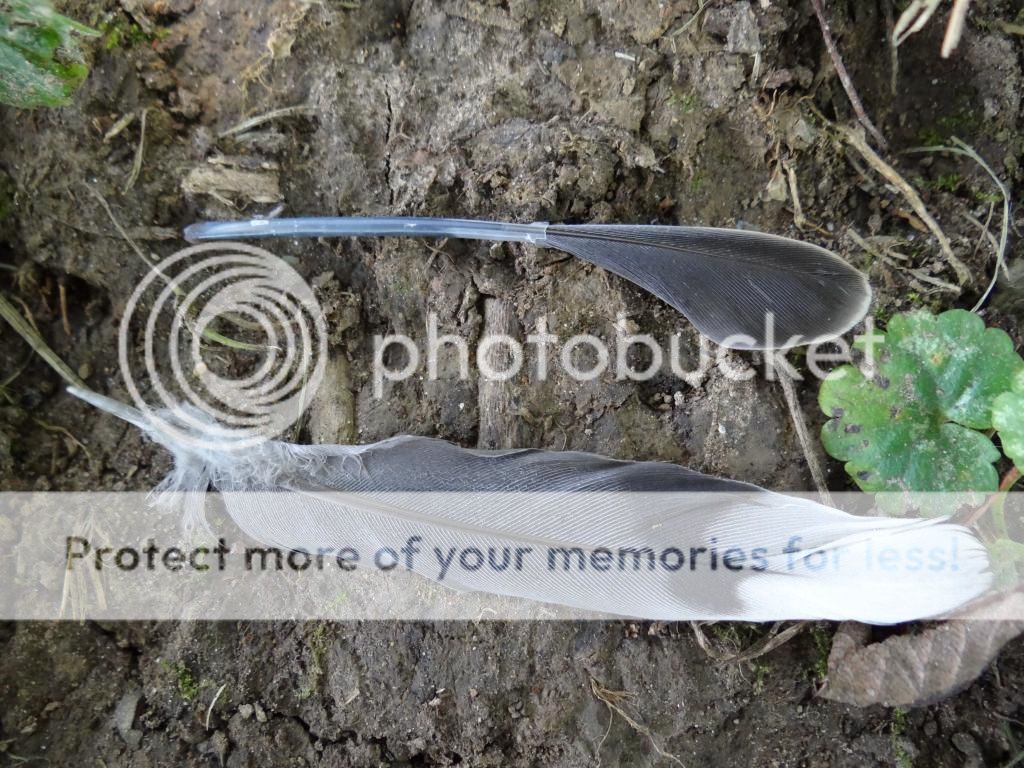Science lessons from a mourning dove
What I did not mention in the title, which you may like to know, is that the 'science lesson' in this article is derived from an undevolped feather from a young mourning dove that became lunch for some other species (whether a hawk or cat or other predator, I don't know). I was out gathering fallen apples from under one of the trees in my orchard when I noticed a large collection of some feathers on the ground. I went over to investigate and saw that some of the feathers weren't fully developed, still having their sheaths. And now for a picture, followed by the science lesson:

In the photo above, I placed a fully formed feather (bottom) that I found nearby below the underdeveloped feather (top). Both feathers are from mourning doves (just in case you were wondering, or are interested). The top feather still has it's 'sheath' on, which is what initiall attracted my attention to it. The feather sheath is what protects the developing feather, and underneath it lies one artery and on vein, which are supplying blood to the developing feather (as I learned, don't put much pressure on the sheath or blood will come out of the quill). Once the feather is fully developed, the artery and vein dry up and become useless. At that time, the remainder of the feather underneath the sheat is fully formed, and the sheath will soon split off, or in some circumstances, the bird will remove it with it's bill (notice how the sheath recedes as the feather forms, up until a certain point in development). And that is what every bird nerd should know about developing bird feathers. Oh, and by the way, these developing feathers are called 'pin' feathers.